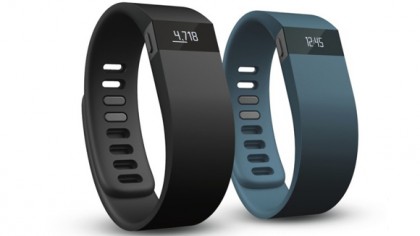11 ways Apple and Google can save the smartwatch
It's not smart enough...yet
We want to see future smartwatches open to as many as possible, even if a Google watch doesn't flex the full functionality on iOS as it does on Android.

6. Keep it snug
Fun fact: no one wants wrist bulk. The Galaxy Gear design is far too rigid, and even the Pebble isn't to everyone's tastes. The smartwatch needs to be like any other watch; we should forget it's even there when we're not using it.
That doesn't necessarily mean that we want a tiny screen - big watch faces are pretty popular these days - we just want something that comfortably molds to our wrist.
At the same time, text needs to take advantage of all the screen real estate. On the Sony Smartwatch 2 text size is too small and often crammed into just a portion of the screen. No option to make it bigger, either. Big mistakey.

7. Maximise fitness
Some people are never going to warm to the idea of having a smartphone extension on their wrist, but when fitness enters the loop it becomes a different story. The popularity of the Nike Fuelband, Fitbit Flex and Jawbone Up are testament to this.
Take a look at the Fitbit Force - not only does it do all your fitness tracking but it will also display incoming calls. Most people won't even consider it to be a smartwatch, but it's certainly on its way.
Sat on our wrist, there's a wealth of information smartwatches can absorb, and it seems a wasted opportunity to skip over that. Did someone say kinetic charging?
Sign up for breaking news, reviews, opinion, top tech deals, and more.

8. Let us switch the smarts off
The invisible umbilical cord between our watch and phone should not be a lifeline. If our smartwatch becomes untethered from the source then we want it to act like a normal watch. Or, even better, let it connect to our home Wi-Fi and continue to receive certain notifications that way.
But it should be able to have the time displayed constantly at all times, and do the basics like set alarms and not have to worry that we'll have a piece of dead tech hanging on our wrist because we left our phone at the office.
One thing we like about the Galaxy Gear is how it vibrates when you get out of Bluetooth range with your Galaxy device. Say you walk out the door without your phone, your smartwatch can start vibrating to let you know. The ability to lock a phone that's out of bluetooth distance could also be beneficial in terms of going some way to protect your phone against pickpockets.

9. Go big on Google Now/Siri
Word that Google's watch will have Google Now at its heart isn't all that surprising. The idea that Google's watch could not only buzz with the basic notifications, but also send traffic route suggestions to our wrists based on our location, is also an appealing prospect.
Google Now learns about your likes and habits, and if the Google smartwatch is going to be something truly outstanding then it needs to channel this.
A similar thing goes for Apple. While iOS lacks a Google Now of its own, Apple's recent buyout of iPhone app Cue suggests it's going down a similar route.
Google could get the upper hand on Apple here, but if the iWatch comes without a Google Now-like system, it will surely harnessing the power of Siri. While we're not sold on the idea of conversing through our wrist, being able to ask Siri quick questions without having to pull out our phone or tablet could be quite handy.

10. Think hard about battery and price
Smartwatches will likely never be the fashion statement that a nice Rolex is. People won't shell out anywhere near that amount and you can understand why. Samsung and to a lesser extent Sony have priced their watches too high for something that most people still don't see the need for.
Battery might soon be one of the biggest smartwatch dealbreakers though. A day of juice power just isn't justifiable given that the watch on your wrist right now might last years on a single battery. Again, can we emphasise kinectic charging here please?

11. One last thing... take your time
Some people reckon Apple intentionally leaked word of an iWatch to get competitors racing for a misguided headstart. It's most likely a load of tosh, but the theory is bang on about how the market has responded.
The smartwatch boom is taking place and yet Apple and Google are nowhere to be seen. We think Google is close but there's no telling, and we don't expect to see Apple's iWatch this year (we're guessing March 2014, you can come back and rub it in our faces if we're wrong).
However there's a good chance that both of these will have learned from others mistakes. By watching the market this year, Apple and Google have had time to fine tune. Other companies should be doing this too right now, rather than rushing out the door. Here's hoping that 2014 is the year that the smartwatch finally wins out.
So now we've told you what we want, what do we know about the iWatch and Google smartwatch so far?

Hugh Langley is the ex-News Editor of TechRadar. He had written for many magazines and websites including Business Insider, The Telegraph, IGN, Gizmodo, Entrepreneur Magazine, WIRED (UK), TrustedReviews, Business Insider Australia, Business Insider India, Business Insider Singapore, Wareable, The Ambient and more.
Hugh is now a correspondent at Business Insider covering Google and Alphabet, and has the unfortunate distinction of accidentally linking the TechRadar homepage to a rival publication.